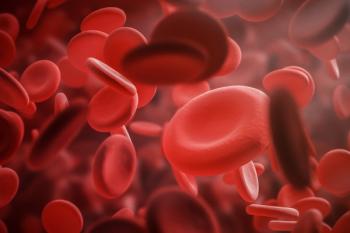
Outpatient parenteral therapy growing, study says
Pharmacists who see a move toward outpatient parenteral therapy are riding the latest shift in patient care. A new report from the Emerging Infections Network (EIN) found that OPAT, outpatient parenteral antimicrobial therapy, has become the de facto standard of care in most hospitals. EIN is part of the Infectious Diseases Society of America.
"There are some significant issues in the economic and efficient use of antibiotics," said Alan Tice, M.D., associate professor at the John A. Burns School of Medicine at the University of Hawaii at Manoa. "The data indicate that there is significant potential savings in dollars and in staff time if you give a drug once a day rather than two to four times a day."
Tice coauthored a review of OPAT that appeared in the November 2006 issue of Clinical Infectious Diseases. A survey of EIN members nationwide found that 94% of hospitals frequently discharged patients on OPAT. Vancomycin, ceftriaxone, and cefazolin were the antibiotics most often prescribed for OPAT. OPAT is most commonly used to treat bone and joint infections, endocarditis, or skin and soft tissue infections.
"You don't want to commit to four to six weeks of hospitalization simply to give an antibiotic," Tam said. "If we could just use a pill, that would be wonderful, but it isn't always practical with the drugs or the conditions we see in OPAT." From the pharmacy perspective, there is nothing unusual about OPAT, he said. The only difference is that the patient leaves the pharmacy with an IV bag instead of a vial.
The EIN survey found that nearly all OPAT patients are treated at home rather than in a hospital, clinic, infusion center, or long-term care facility. In terms of intravenous catheter preferences, 86% of respondents used peripherally inserted central venous catheters.
There was no strong preference for devices used to deliver OPAT. Electronic pumps were the top device, used by 31% of prescribers, while 29% preferred minibags plus gravity. Other devices included electronic syringe pumps, multidose electronic pumps, elastomeric pumps, and mechanical pumps.
Outpatient administration is a clear win for patients as well as hospitals, Tice noted. Hospital costs currently average $1,000 per night nationwide, he said. Most of that cost goes to hotel functions, not to medical care. "Staying in a hospital is like staying in the hotel penthouse in terms of cost," he said. "You're paying $1,000 a night to give drugs that may cost $100. That's tough to justify under most conditions."
There are powerful economic arguments favoring OPAT, but outpatient treatment has its drawbacks, too. The EIN survey found that 68% of clinicians had encountered serious complications related to OPAT in the past year. The most common problems were thrombosis with occlusion or embolism, line-related bacteremia, and exit-site or tunnel infection.
In addition, 13 respondents reported that 14 of their patients had died unexpectedly during OPAT in the previous year. And 16 infectious disease consultants reported having been sued in connection with OPAT at some point in the past.
"There are potential quality-of-care issues with OPAT," Tice said. One of the most pressing problems is jurisdiction, he explained. An unexpected patient death in a hospital is a sentinel event that must be investigated under rules set by the Joint Commission on Accreditation of Healthcare Organizations. But there are few clear rules when it comes to unexpected outpatient deaths.
Newsletter
Pharmacy practice is always changing. Stay ahead of the curve with the Drug Topics newsletter and get the latest drug information, industry trends, and patient care tips.





























































































































